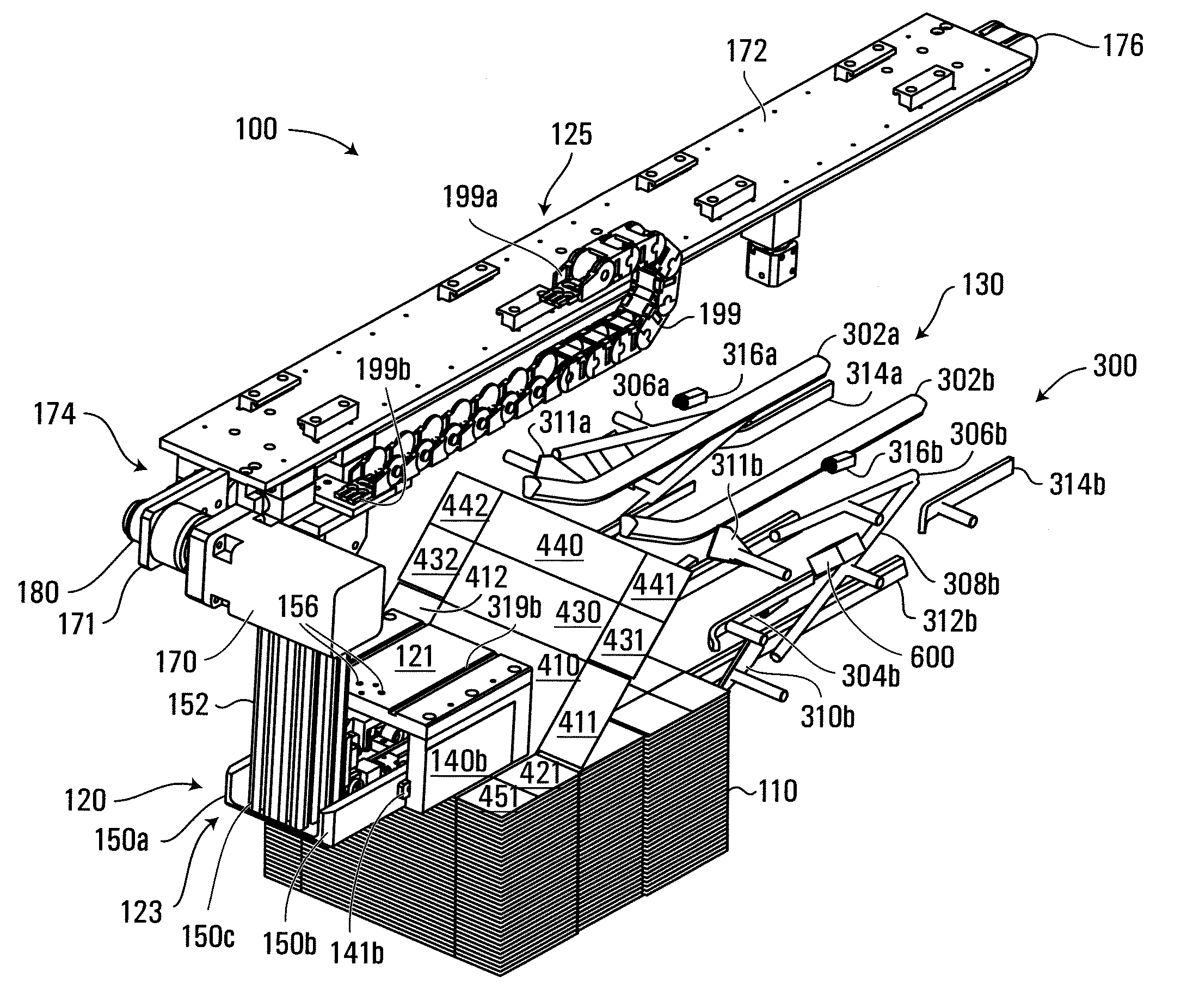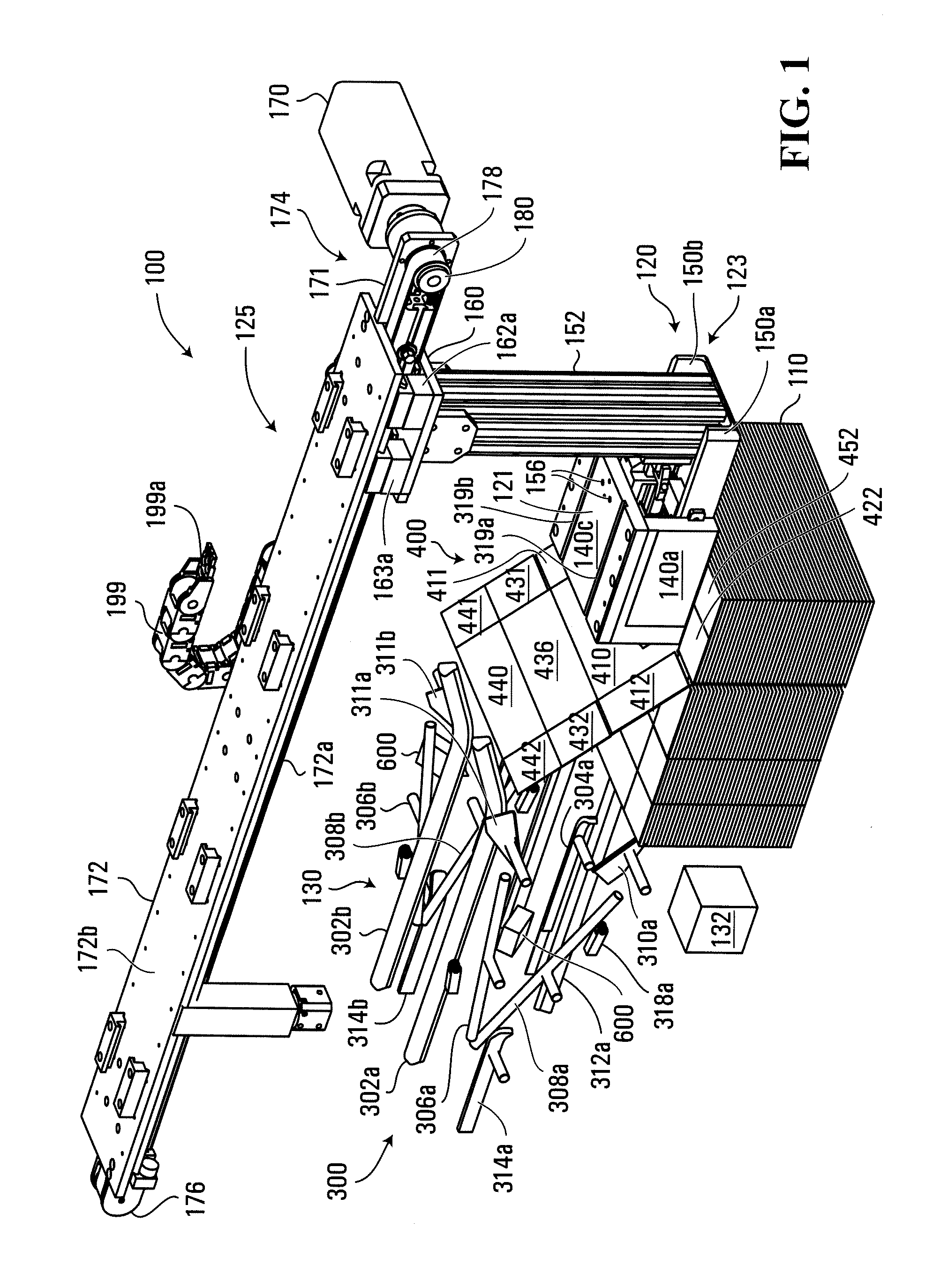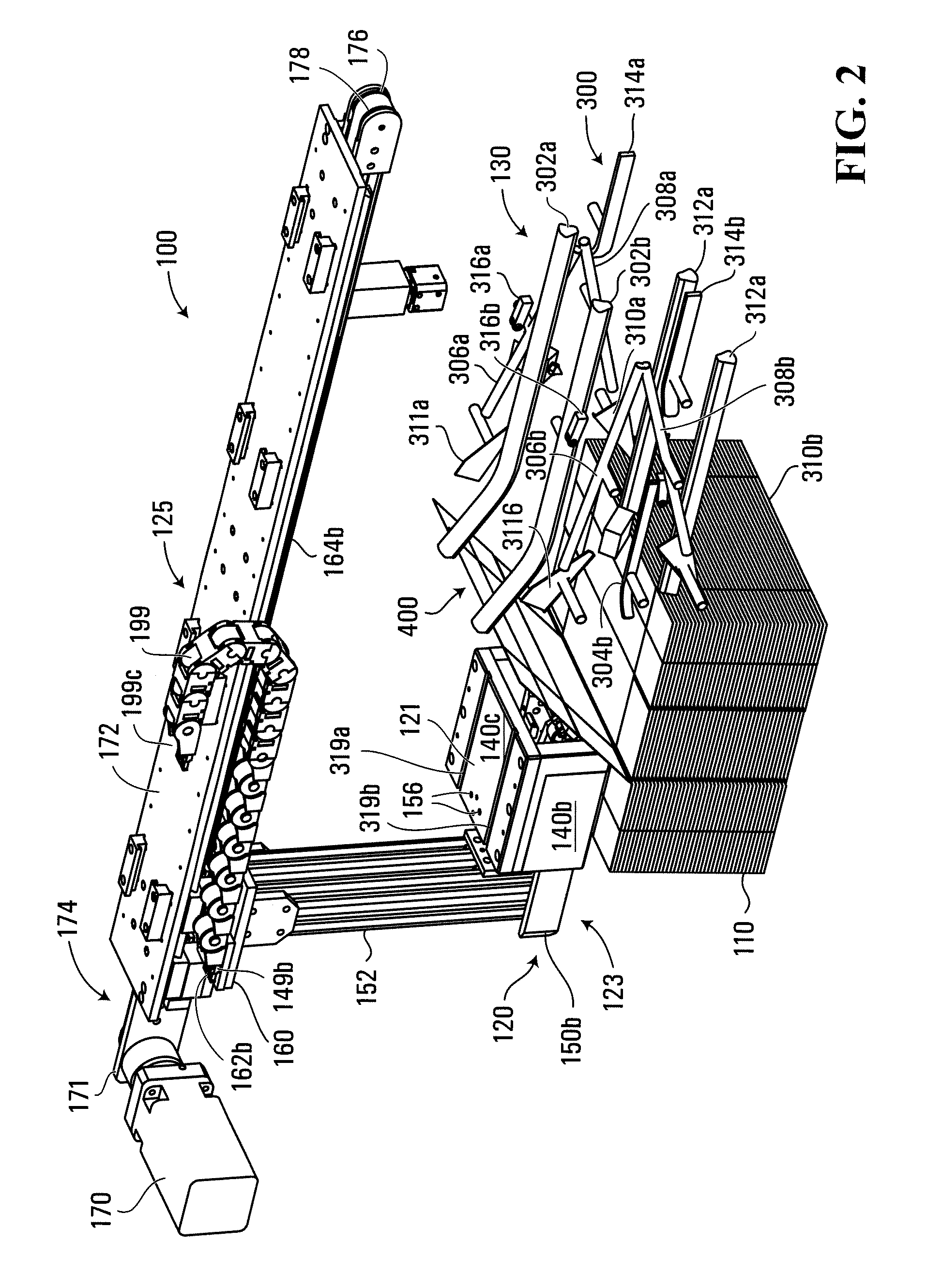Method and apparatus for forming containers with corrugated material
a technology of corrugated material and forming method, which is applied in the direction of paper/cardboard containers, containers, packaged goods, etc., can solve the problems of significant increase in shipping costs, inability to adapt pre-folded and pre-glued blanks to shipping in bulk, and drawbacks in the process of forming and packing rscs, etc., to achieve the effect of cheaper manufacturing and equivalent or better strength
- Summary
- Abstract
- Description
- Claims
- Application Information
AI Technical Summary
Benefits of technology
Problems solved by technology
Method used
Image
Examples
Embodiment Construction
[0053]With reference initially to FIG. 28, a process for forming and packing a DSS-RSC case with items is illustrated schematically. The first step 1000 is the formation of a corrugated sheet of material (that may be formed into a roll of material) from which the DSS-RSC blank will be made. The roll or sheet of corrugated material does not have to be of the specific width or length of the desired width and length of the DSS-RSC blank such as blank 400 as illustrated in FIG. 30. The corrugated roll or sheet of fibreboard can be formed using a known type of corrugator machine such as the BHS Corrugator machine made by BHS Corrugated Maschinen- and Anlagenbau GmbH. An example of the type of corrugated sheet of material that may be produced is described in U.S. Pat. No. 150,588 the entire contents of which are hereby incorporated herein by reference. Step 1000 will typically take place in a plant location that is dedicated to manufacturing sheets / rolls of corrugated materials.
[0054]Once...
PUM
| Property | Measurement | Unit |
|---|---|---|
| angle | aaaaa | aaaaa |
| width | aaaaa | aaaaa |
| length | aaaaa | aaaaa |
Abstract
Description
Claims
Application Information
 Login to View More
Login to View More - R&D
- Intellectual Property
- Life Sciences
- Materials
- Tech Scout
- Unparalleled Data Quality
- Higher Quality Content
- 60% Fewer Hallucinations
Browse by: Latest US Patents, China's latest patents, Technical Efficacy Thesaurus, Application Domain, Technology Topic, Popular Technical Reports.
© 2025 PatSnap. All rights reserved.Legal|Privacy policy|Modern Slavery Act Transparency Statement|Sitemap|About US| Contact US: help@patsnap.com



